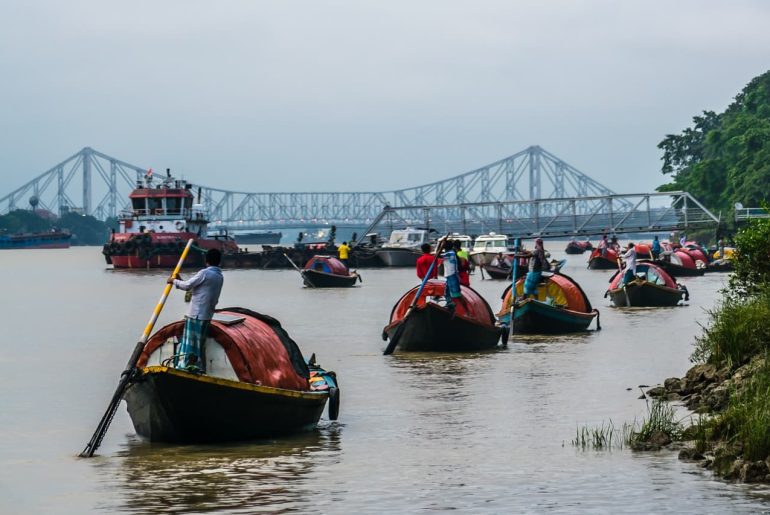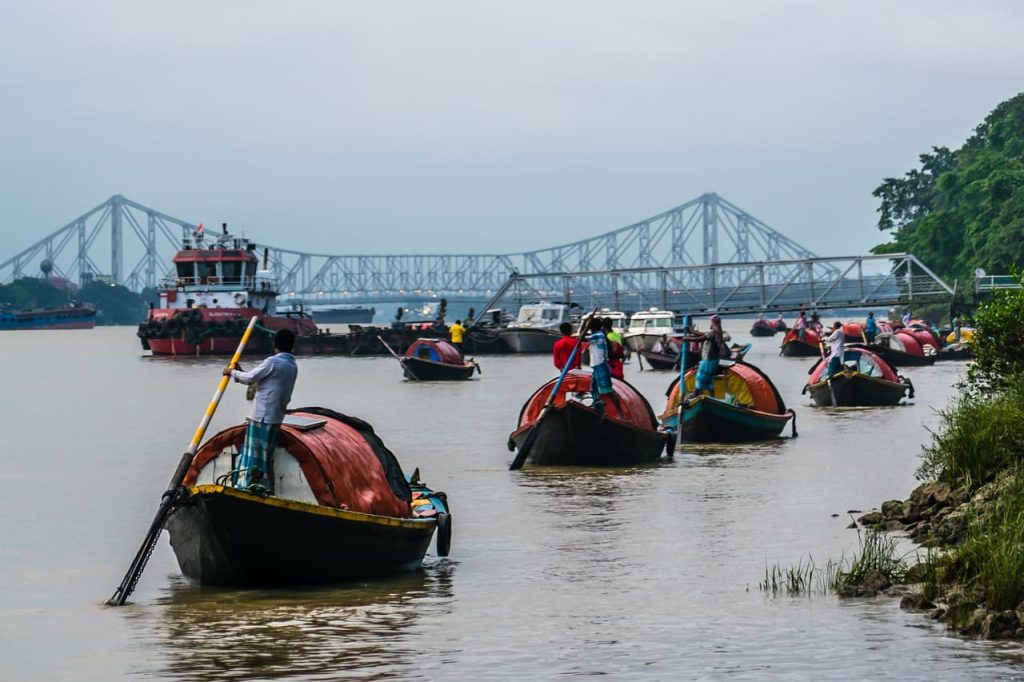
Howrah Bridge, also known as Rabindra Setu, connects the twin cities of Howrah and Kolkata in India, symbolizing the region’s rich history and culture. The idea for the bridge was proposed in 1862, but it was in the early 20th century’s industrial revolution that its construction was commissioned. Amid the chaos of World War II, Bridge builds in 1943 and has since become an iconic landmark, representing India’s struggle for independence and economic and cultural growth.
The Design and Construction of Howrah Bridge – a Marvel of Engineering
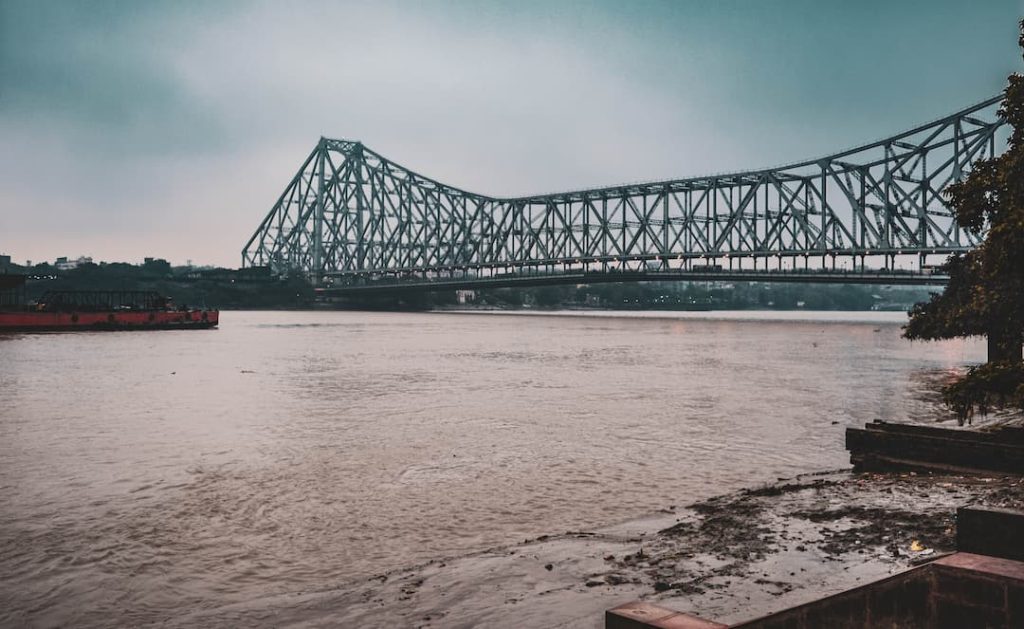
Howrah Bridge spans 705 meters long and 97 feet wide, with suspension towers at 270 feet above the Hooghly River. Its design allowed for the bridge to withstand strong currents and frequent floods. “Hey, did you know that when they built that big bridge, they used some cool tricks to make it happen? They used something called the cantilever method and the balanced cantilever method. They built it in pieces without needing big metal frames called scaffolding. Pretty neat, huh?”. Do you know, “Yo, check it out! When making that numerous bridges, they did some super cool stuff to get it done. They used these things called the cantilever method and the balanced cantilever method. They built it in chunks without using oversized metal frames called scaffolding. How dope is that?”
The Industrial Revolution greatly impacted India’s economy and society, leading to growth in industries like textiles, steel, and railways, which created a higher demand for infrastructure like bridges. The construction of the Howrah Bridge was possible due to modern materials and innovative engineering techniques, resulting in a lighter and more substantial bridge.
The Economic Impact of Howrah Bridge on Kolkata and India
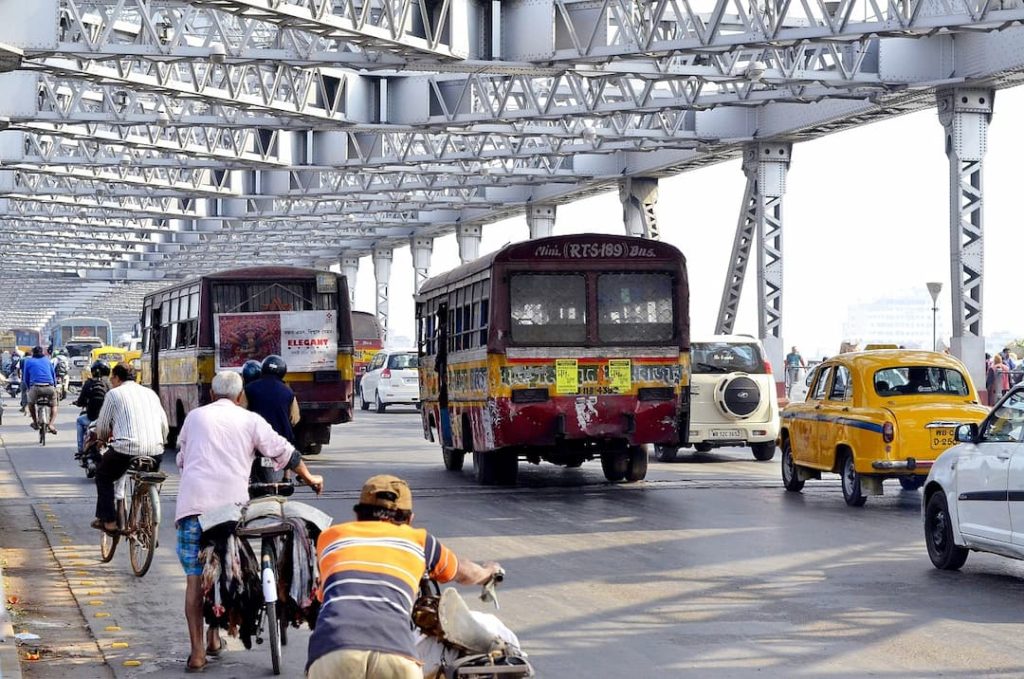
Howrah Bridge was a vital contributor to the economic development of Kolkata and India. It enabled easy transportation of goods and people, facilitating the city’s port’s growth and aiding the country’s connection to other major cities, leading to economic development throughout India. Today, Howrah Bridge signifies India’s industrial revolution and ongoing economic progress.
Cultural Icon – its role in Indian Literature, Art, and Film
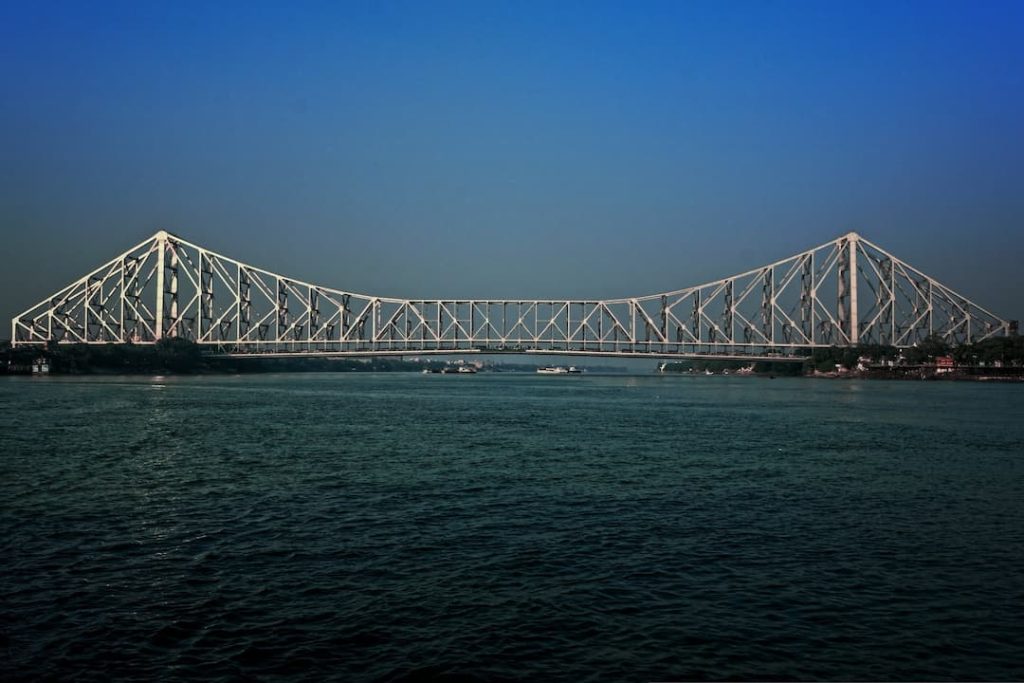
The Howrah Bridge in Kolkata has inspired artists and writers for decades, serving as a metaphor for a range of emotions and symbolizing the complexities of modern life. It has been in Indian literature, including the famous Bengali novel Howrah Bridge by Rangalal Bandyopadhyay, and Indian cinema, with its imposing structure as the backdrop for many films. The bridge has become an iconic symbol of Kolkata’s cultural heritage.
The Future of Howrah Bridge – balancing preservation and Development
Preserving the heritage status of Howrah Bridge in Kolkata while meeting the city’s future needs is a challenge. Experts propose upgrading the bridge’s functionality while maintaining its architectural and cultural features. The bridge plays a significant role in connecting the east and west banks of the Hooghly River, making a balance between preservation and development essential for it to continue serving its purpose while retaining its historical significance.
